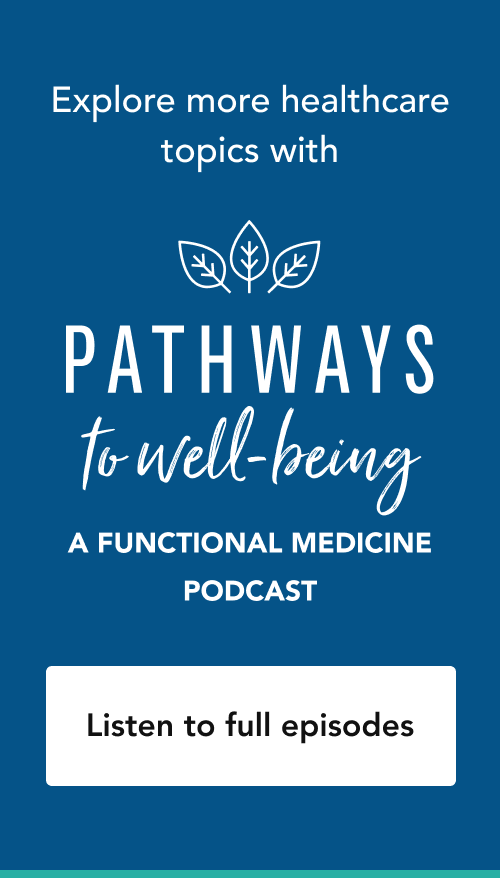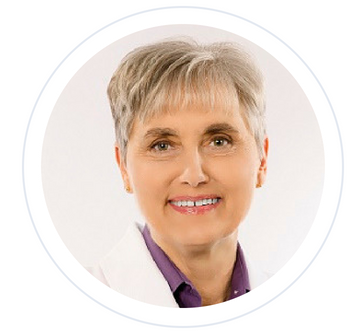podcasts
Paul Thomas, MD, on Addiction & Stress in Young Adults
It’s not easy to be human. For anyone. And some of us find being human excruciatingly hard. Your battle with addiction may look nothing like mine. But at our core we are the same: struggling to find our way, looking to stay safe, wanting to be connected, seeking pleasure, and hoping to feel loved.
In 2017, 18.7 million (7.6%) adults in the US aged 18 or older had a substance use disorder (SUD).1 Among those with an SUD, three in eight struggled with illicit drugs, three in four struggled with alcohol use, and one in nine struggled with illicit drugs and alcohol.1 Also in 2017, an estimated 20.7 million people aged 12 or older needed substance use treatment (or 1 in 13 people).2 Among young adults aged 18 to 25, about one in seven people needed treatment.2 What is being done to help those who struggle with addiction? Who are the faces behind the numbers? Are their voices being heard?
Statistics show that only 1 in 10 people with addiction involving drugs or alcohol receive treatment.3 Stopping opiate and/or alcohol use is immensely challenging for both the addict and the clinician, and addiction is generally not a primary care area of expertise. If left untreated, addiction can spiral into an endless sea of isolation and self-destruction that ultimately ends in suicide or early death. In 2017, the number of Americans dying from overdoses alone rose to 72,000 from 64,000 the previous year.4
Paul Thomas, MD, a Functional Medicine clinician practicing in Portland, OR, is working to curb this problem. As a board-certified fellow of the American Academy of Pediatrics and a certified addiction specialist, Dr. Thomas has helped more than 500 patients—adolescents and young adults—with opioid addiction through medication-assisted therapies at his Fair Start clinic. Himself an alcoholic in recovery for 16 years, Dr. Thomas has a unique window into the pathology of the disease of addiction and how it manifests in young adults.
In an interview with IFM Director of Medical Education Dan Lukaczer, ND, Dr. Thomas talks about his personal struggles with addiction, the medical-assisted therapies like buprenorphine he offers in his clinic, and the intrinsic link between stress and addiction. Listen to the full audio here:
Addiction experts agree that at the core of the disease lies an emptiness that often develops out of early stress and/or fear compounded by isolation. Habits like drinking or using drugs to self-soothe may seem non-adaptive when that addiction is negatively impacting the patient’s life, but at some point, this adaptation may have helped the user to endure the pain of their experiences.
As addiction expert Gabor Maté explains, “It is impossible to understand addiction without asking what relief the addict finds, or hopes to find, in the drug or addictive behavior…. The addict dreads and abhors the present moment; she bends feverishly only toward the next time, the moment when her brain, infused with her drug of choice, will briefly experience itself as liberated from the burden of the past and the fear of the future—the two elements that make the present intolerable.”
Dr. Thomas underscores this idea: “I think people who have challenges with addiction realize that their substance of choice was doing something for them that they loved or needed,” he says.
You’ll hear this from opioid addicts, from meth addicts—alcoholics for sure. Initially, the substance is doing something for them to release tension; it’s pleasurable.
For Dr. Thomas, alcohol helped to quell the anxiety and hyperactivity that defined his childhood. In medical school, he loved the effect of intoxication but would only allow himself to drink once a week. However, as the disease of addiction progressed, he began to use alcohol on a daily basis to help him sleep and was considered a “functioning alcoholic.”
“Often times, those of us who call ourselves alcoholic, what we learned was: it’s that first drink that triggers the phenomenon of craving, and you may or may not have an ‘off switch,’ so you drink way more than you intended,” explains Dr. Thomas.
That’s the vicious cycle. You wake up remorseful the next morning, saying to yourself, ‘I’m not going to do that again,’ and by evening, you find your car just veering off to the liquor store.
Things continued this way for Dr. Thomas for over 13 years. But now in his 16th year of sobriety, he has also helped his wife of 30 years fight an addiction to opioids as a result of multiple surgeries for TMJ. Dr. Thomas opened his Fair Start clinic in 2009 at a time when the formulation for oxycontin was changed to make it nearly impossible to crush or chew the pill. People very quickly turned to heroin.
“Thus, these days, almost all of my patients in my opioid addiction clinic are addicted to heroin,” says Dr. Thomas. “That was sort of the impetus to start that clinic—also to honor my wife’s journey.”
I’m a pediatrician who deals with over 1,000 patients with ADD, ADHD, and 300 with depression/anxiety. These are high risk teenagers, and some of them do end up addicted to opiates. This provides them with a safe landing and a place where they can get that taken care of fairly efficiently.
With his adolescent patients at the Fair Start clinic as well as those he treats in his pediatric practice, Dr. Thomas emphasizes the importance of connecting with others, reducing screen time, and incorporating stress-reducing modalities into everyday living.
“The connection you have on a screen is not the same as the interpersonal connection you have when you’re just sitting with somebody. With addiction, I think one of the biggest stressors and biggest factors that put us at risk is this lack of connection,” says Dr. Thomas. “You [may] have in your practice patients who are stressed out but are not aware of it. They may be presenting in your office with depression or anxiety; they may be suicidal, they can’t get out of bed, they can’t get out the door…they can’t focus. Recently, I saw six teenagers with a depressed, anxious [presentation]. One by one by one, I started to ask them, ‘How much time are you spending on your phone?’ It is six to eight hours on average these days. That’s on school days. On the weekend, it’s almost continuous.”
Theories of addiction have historically focused on individual factors such as biological, cognitive-behavioral, and individual differences models, but a growing body of research shows that social factors also play an important role.5 Social isolation can precipitate the development of a substance-use disorder, and for those in treatment for addiction, a social network support for abstinence has been found to influence treatment outcomes.5
A noteworthy study in 2014 found a “worrisome, vicious cycle between loneliness and Internet addiction.”6 The cross-lagged panel survey of 361 college students in Hong Kong suggests that excessive and unhealthy internet use increases feelings of loneliness over time. This study also found that online social contacts with friends and family were not an effective alternative for offline social interactions in reducing feelings of loneliness.6
A growing body of literature is associating excessive and addictive use of digital media with physical, psychological, social, and neurological adverse consequences.7 Physical health effects of excessive screen time include poor sleep and risk factors for cardiovascular disease. Brain structural changes related to cognitive control and emotional regulation are also associated with digital media addictive behavior.7 Further complicating the dynamic, one 2019 study also found excessive screen time might be a coping strategy to deal with symptoms of anxiety.8 Yet instead of helping ease anxiety, excessive screen time has the opposite effect—compounding anxiety and feelings of isolation.
“You’re on your screen playing or scrolling, and you don’t realize that each time you hit that scroll button, you are actually creating a stress response in your body. Whether it is physical pain or emotional pain that leads you to look for relief, you end up with stress and pain, and it can transition into becoming an addiction,” explains Dr. Thomas.
Whether it’s the screen addiction itself or [the stress that] pushes you to look for relief from more powerful sources—whether it is drugs or alcohol, tobacco—there’s a whole long list of substances and behaviors that can become addicting.
Listen to more IFM interviews on the topics of stress, pain, and addiction
purchase dr. thomas’s lecture and many other in the 2019 aic proceedings
References
- McCance-Katz EF. The National Survey on Drug Use and Health: 2017. Substance Abuse and Mental Health Services Administration. Published 2017. Accessed April 1, 2019. https://www.samhsa.gov/data/sites/default/files/nsduh-ppt-09-2018.pdf
- Bose J, Hedden SL, Lipari RN, Park-Lee E. Key Substance Use and Mental Health Indicators in the United States: Results From the 2017 National Survey on Drug Use and Health. Center for Behavioral Health Statistics and Quality, Substance Abuse and Mental Health Services Administration; 2018. https://www.samhsa.gov/data/sites/default/files/cbhsq-reports/NSDUHFFR2017/NSDUHFFR2017.htm
- The National Center on Addiction and Substance Abuse at Columbia University. Addiction Medicine: Closing the Gap Between Science and Practice. Columbia University; 2012. https://www.centeronaddiction.org/sites/default/files/Addiction-medicine-closing-the-gap-between-science-and-practice_1.pdf
- National Institute on Drug Abuse. Overdose death rates. Revised January 2019. Accessed April 1, 2019. https://www.drugabuse.gov/related-topics/trends-statistics/overdose-death-rates
- Dingle GA, Cruwys T, Frings D. Social identities as pathways into and out of addiction. Front Psychol. 2015;6:1795. doi:10.3389/fpsyg.2015.01795
- Yao MZ, Zhong ZJ. Loneliness, social contacts and internet addiction: a cross-lagged panel study. Comput Human Behav. 2014;30:164-170. doi:10.1016/j.chb.2013.08.007
- Lissak G. Adverse physiological and psychological effects of screen time on children and adolescents: literature review and case study. Environ Res. 2018;164:149-157. doi:10.1016/j.envres.2018.01.015
- Brand S, Lemola S, Mikoteit T, et al. Sleep and psychological functioning of children and adolescents – a narrative review. Prax Kinderpsychol Kinderpsychiatr. 2019;68(2):128-145. doi:10.13109/prkk.2019.68.2.128




